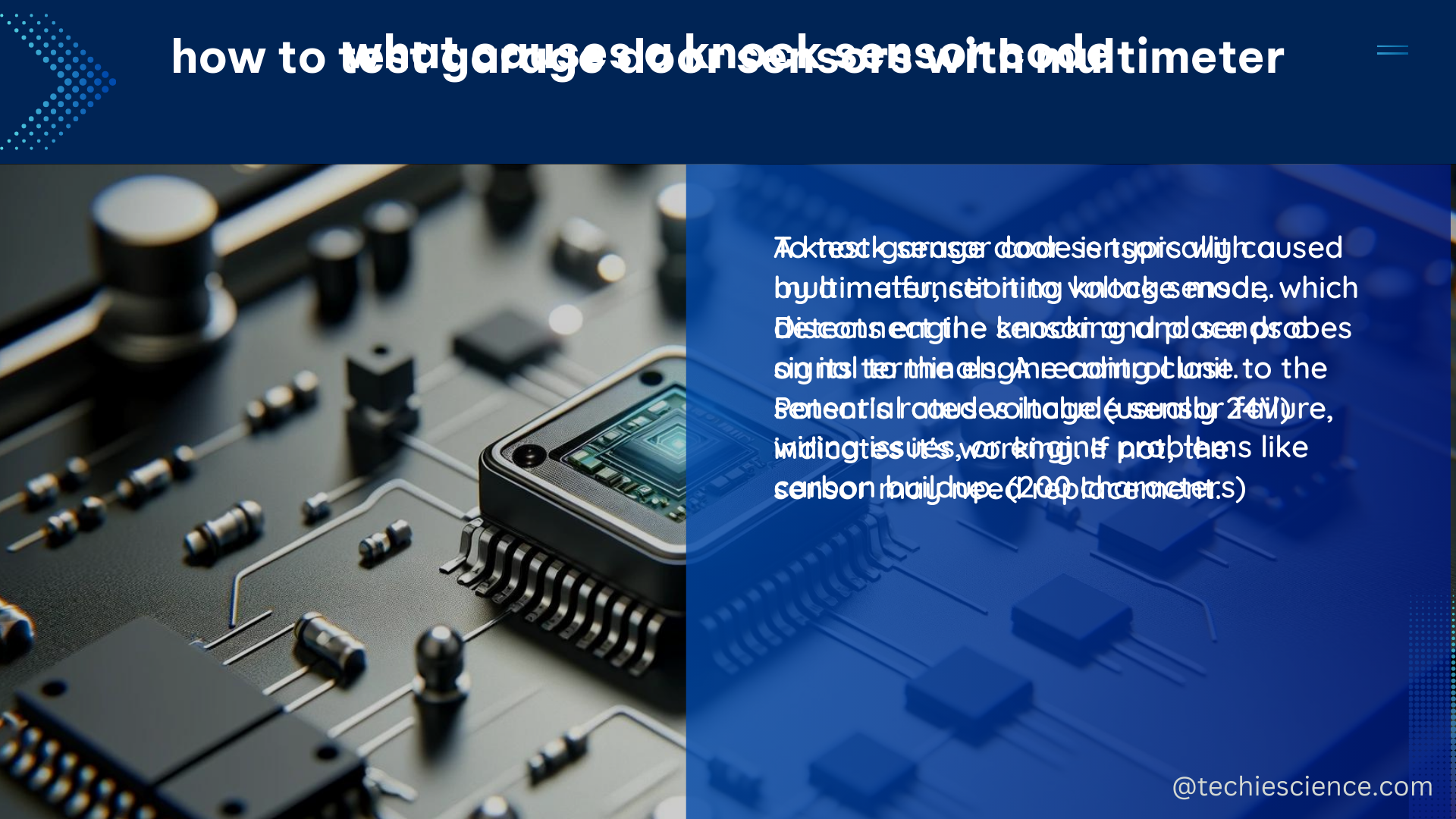A knock sensor code, such as P0325 or P0330, is generated when the vehicle’s computer system (ECU) detects a problem related to the knock sensor. The knock sensor’s primary function is to monitor engine vibrations and detect any abnormal combustion, known as “knocking,” which can lead to engine damage if left unchecked. When the ECU identifies an issue with the knock sensor, it sets a specific trouble code to help diagnose and address the problem.
Understanding Knock Sensor Codes
Knock sensor codes are part of the vehicle’s on-board diagnostics (OBD) system, which continuously monitors various engine and vehicle components. Common knock sensor codes include:
- P0326: Knock Sensor 1 Circuit Range/Performance
- P0330: Knock Sensor 2 Circuit
- P0327: Knock Sensor 1 Circuit Low Input
- P0333: Knock Sensor 2 Circuit Low Input
These codes provide valuable information about the nature and location of the knock sensor-related issue, allowing technicians to efficiently diagnose and repair the problem.
Causes of Knock Sensor Codes

There are several potential causes for a knock sensor code to be set in a vehicle’s computer system. Let’s explore these in detail:
1. Faulty Knock Sensor
The knock sensor itself can be the root cause of a knock sensor code. Over time, the sensor may become worn, damaged, or simply fail to function correctly. This can result in the sensor failing to detect engine knock or sending inaccurate signals to the ECU, triggering a trouble code.
Symptoms of a faulty knock sensor may include:
– Rough engine idling
– Decreased fuel efficiency
– Engine misfiring or hesitation
– Increased engine noise or vibration
To diagnose a faulty knock sensor, technicians may perform the following tests:
– Resistance and continuity checks on the sensor and its wiring
– Voltage and signal output tests using a multimeter or oscilloscope
– Comparison of the sensor’s output to known good values
If the knock sensor is found to be defective, it will need to be replaced to resolve the issue.
2. Wiring and Electrical Issues
Damage to the wiring or loose connections in the knock sensor circuit can also cause a knock sensor code to be set. This can include issues such as:
– Broken, frayed, or corroded wiring
– Loose or damaged connectors
– Intermittent electrical connections
These types of problems can prevent the ECU from receiving the proper signal from the knock sensor, leading to the generation of a trouble code.
To diagnose wiring and electrical issues, technicians may:
– Visually inspect the wiring and connectors for any signs of damage
– Use a multimeter to test for continuity, resistance, and voltage drops in the circuit
– Perform a wiggle test to identify any intermittent connections
Repairing or replacing any damaged wiring or connectors may be necessary to resolve the knock sensor code.
3. Problems with the PCM
In some cases, the vehicle’s Powertrain Control Module (PCM) or Engine Control Unit (ECU) may be the source of a knock sensor code. If the PCM is unable to properly communicate with the knock sensor or process the sensor’s input, it may set a trouble code.
Symptoms of a PCM-related knock sensor code may include:
– Inconsistent or erratic sensor readings
– Difficulty in diagnosing the root cause of the code
– Presence of other unrelated trouble codes
To diagnose a PCM-related issue, technicians may:
– Perform diagnostic scans to check for any other trouble codes
– Check for any software or firmware updates available for the PCM
– Test the PCM’s ability to communicate with the knock sensor using specialized diagnostic tools
In some cases, the PCM may need to be reprogrammed or replaced to resolve the knock sensor code.
Addressing Knock Sensor Codes
Ignoring a knock sensor code can lead to serious engine damage, as the ECU’s inability to properly adjust the ignition timing can result in increased detonation and premature wear on engine components. It is essential to address the underlying cause of the knock sensor code as soon as possible.
In the case of a P0325 error code in a 2008 Honda Odyssey, the intermittent nature of the code without any noticeable driving issues suggests that the problem may be related to the wiring rather than the sensor itself. In such cases, it is recommended to thoroughly inspect the wiring and connections related to the knock sensor before considering a sensor replacement.
By understanding the potential causes of knock sensor codes and following a systematic diagnostic approach, technicians can efficiently identify and resolve the issue, ensuring the vehicle’s optimal performance and longevity.
References:
- Knock Sensor Low Voltage Code Cause Timing Pulled
- P0325 Code: Knock Sensor Malfunction (Sensor 1, Bank 1)
- What is a Knock Sensor Code?
- P0325 OBD-II Trouble Code: Knock Sensor Circuit Malfunction
- Knock Sensor P0325 Error On and Off

The lambdageeks.com Core SME Team is a group of experienced subject matter experts from diverse scientific and technical fields including Physics, Chemistry, Technology,Electronics & Electrical Engineering, Automotive, Mechanical Engineering. Our team collaborates to create high-quality, well-researched articles on a wide range of science and technology topics for the lambdageeks.com website.
All Our Senior SME are having more than 7 Years of experience in the respective fields . They are either Working Industry Professionals or assocaited With different Universities. Refer Our Authors Page to get to know About our Core SMEs.